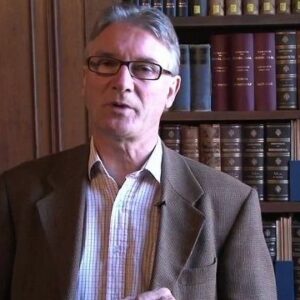Jacob Roggeveen, one of the most well-known explorers of the early 18th century, was a Dutch explorer who is credited with discovering Easter Island while on an expedition to find Terra Australis. He also encountered Bora Bora and Maupiti in Samoa’s Society Islands during this exploration. The expedition that resulted in the discovery of Easter Island and cemented Roggeveen’s place in history as an important explorer was actually his father’s dream. Arend Roggeveen, Jacob’s father, was a mathematician with extensive knowledge of astronomy, geography, and navigation. Arend’s fondest fantasy was to embark on an exploration of the mythical Terra Australis, a dream he would never be able to fulfill despite his best efforts. Nearly half a century later, his sons Jacob and Jan decided to embark on the same voyage their father had once imagined. Jan, a merchant, assisted in the trip’s planning and preparations but did not accompany his brother on the journey. Jacob finally embarked on the expedition, armed with three ships. While he was unable to reach the land of his father’s dreams, he was able to discover another location previously unknown to mankind, thereby establishing a watershed moment in the history of sea exploration.
Childhood & Adolescence
He was born in Middelburg, the Netherlands, on 1 February 1659 to Arend Roggeveen and Maria Storm. His father was a mathematician who also studied astronomy, geography, philosophy, and navigation theory.
His father was enthralled by the prospect of discovering the fabled Terra Australis and, along with a group of friends, presented the idea to the Netherlands’ States General, along with a request for a Charter. Although the charter was granted, Arend Roggeveen and his friends were unable to finance the expedition, which never occurred. After a few years, he died with his dream unfulfilled.
Jacob attended the Latin School and later studied at France’s Academy of Saumur (the Protestant University). He earned a doctorate of law from the University of Harderwijk in 1690.
Career of Jacob Roggeveen
He was hired by the Dutch East Indies Company after applying. He served as a Raadsheer van Justitie (“Council Lord of Justice”) in Batavia, Dutch East Indies, from 1707 to 1714. (now Jakarta).
He returned to Middleburg in 1715. He had amassed considerable wealth through his employment with the company, despite the fact that his personal life had been marred by tragedy—he had been widowed twice by this point.
He seriously considered embarking on the exploration of which his father had once dreamed over the next few years. Despite the fact that he was well into his fifties at the time, he decided to continue the expedition to discover Terra Australis.
He approached the Dutch East Indies Company with the idea of embarking on an exploratory voyage to the Pacific Ocean’s unknown regions. This was within the parameters of the company’s charter, and they provided him with three ships for the discovery voyage. As a result, he resurrected his father’s dream project.
On 1 August 1721, he embarked on his expedition as commander of three ships: the Arend (“eagle”), the Thienhoven, and the Africaansche Galey, all of which carried a crew of 223 men. He was 62 years old at the time, significantly older than the majority of the other explorers of his generation.
He was an experienced explorer who never made rash decisions. He would consult the captains of the three ships—Captain Jan Koster, Captain Comelis Bouman, and Captain Roelof Rosendael—before making any significant decision, and the four men would discuss all the alternatives and reach a consensus.
They sailed down to the Falkland Islands, through the Strait of Le Maire, and beyond 60 degrees south to enter the Pacific Ocean. The group spent a few days in the Juan Fernández Islands between 24 February and 17 March 1722 cleaning, repairing, and resupplying in preparation for exploring unknown parts of the Pacific Ocean.
They resumed sailing and on 5 April 1722, they encountered tortoises and floating vegetation, followed by birds—indications that they were getting close to land. By late afternoon, the Africaansche Galey had sighted land and decided to halt and wait for the next day. Due to the fact that it was Easter Day, Roggeveen chose the name Easter Island for the island.
Along with Easter Island, he discovered several islands in the Tuamotu group during this expedition. He made stops in Takapoto, Makatea, and Samoa before continuing on to Batavia in September 1722. Despite their discoveries, they were unable to reach the legendary Terra Australis. Roggeveen and his crew returned to the Netherlands in 1723.
Personal History and Legacies
He married Marija Margaerita Vincentius after completing his education, but she died in 1694.
He married Anna Adriana Clement a few years later, but she, too, died shortly after the marriage.
He sparked outrage by defending liberal preacher Pontiaan van Hattem and publishing his leaflet ‘De val van’s werelds afgod’. He had published only one part when it was seized and burned by the city council. Fearful for his safety, he fled to a nearby town and published the remaining sections there, reigniting controversy once more.
He died in Middelburg on 31 January 1729, at the age of 69.
Estimated Net Worth
Jacob is one of the wealthiest explorers and is listed on the list of the most popular explorers. Jacob Roggeveen’s net worth is estimated to be around $1.5 million, based on our analysis of Wikipedia, Forbes, and Business Insider.


